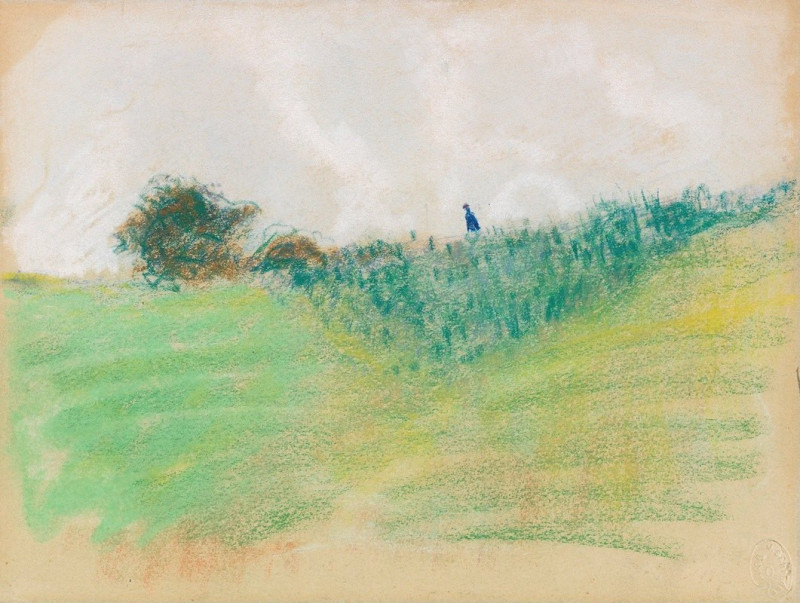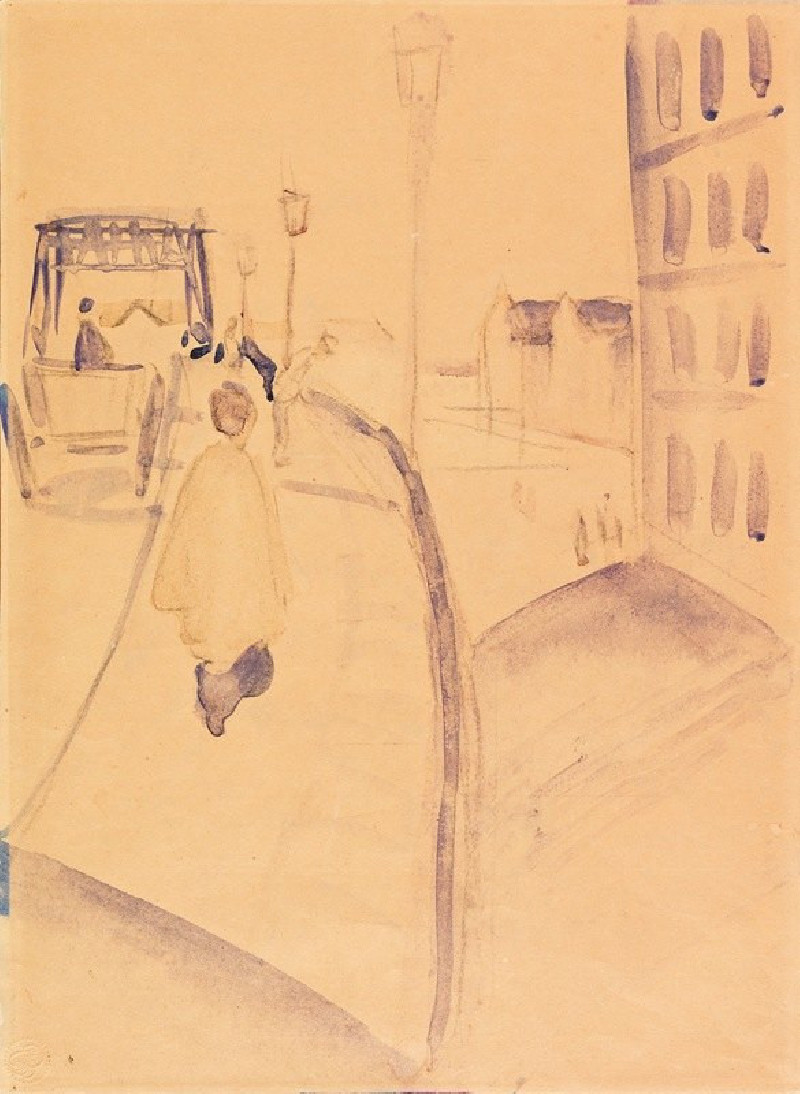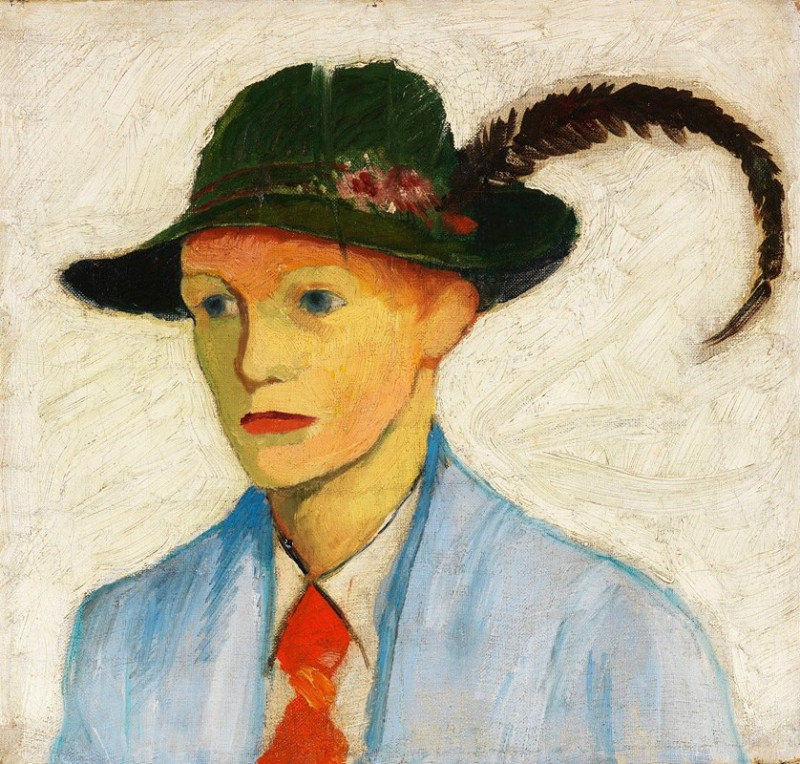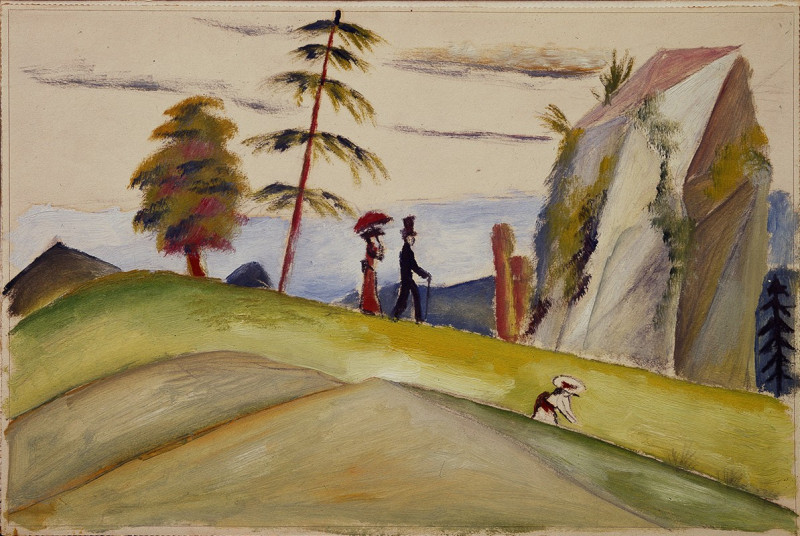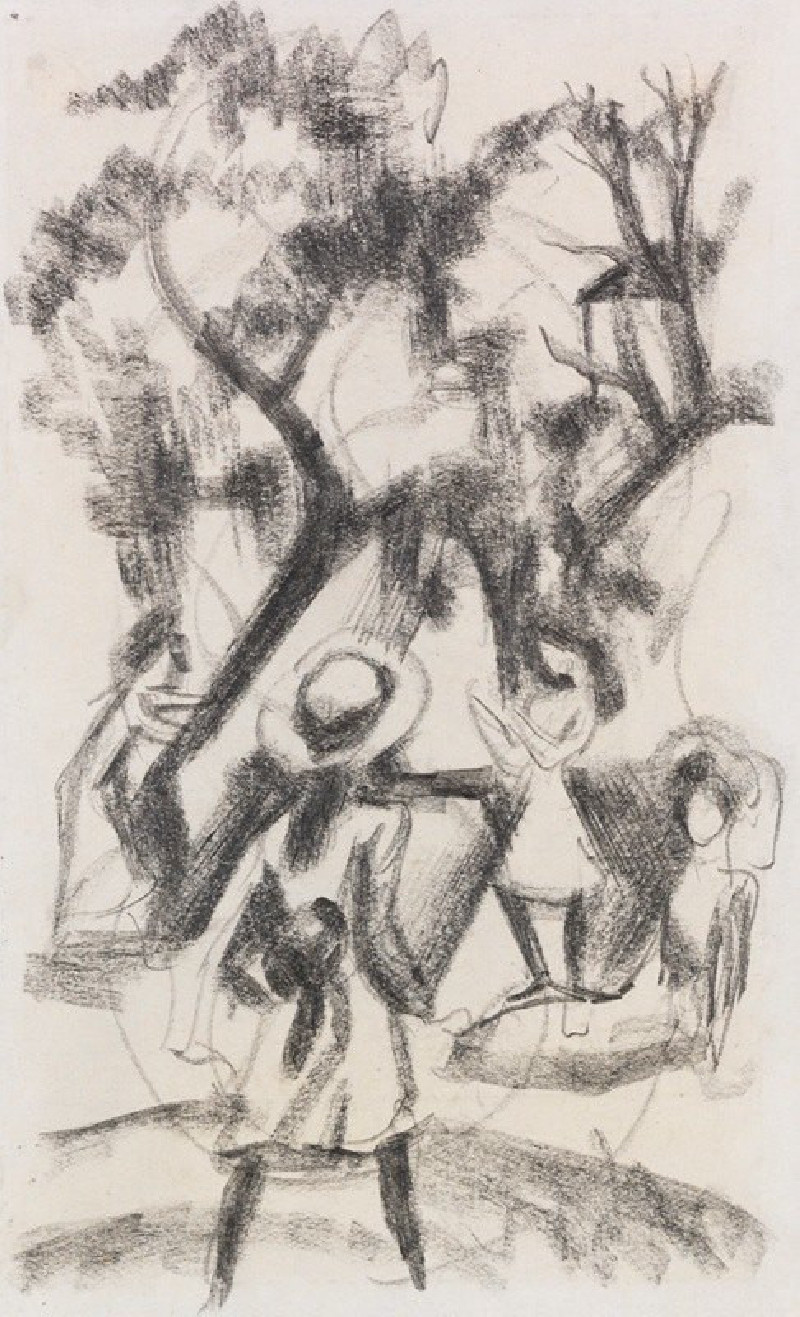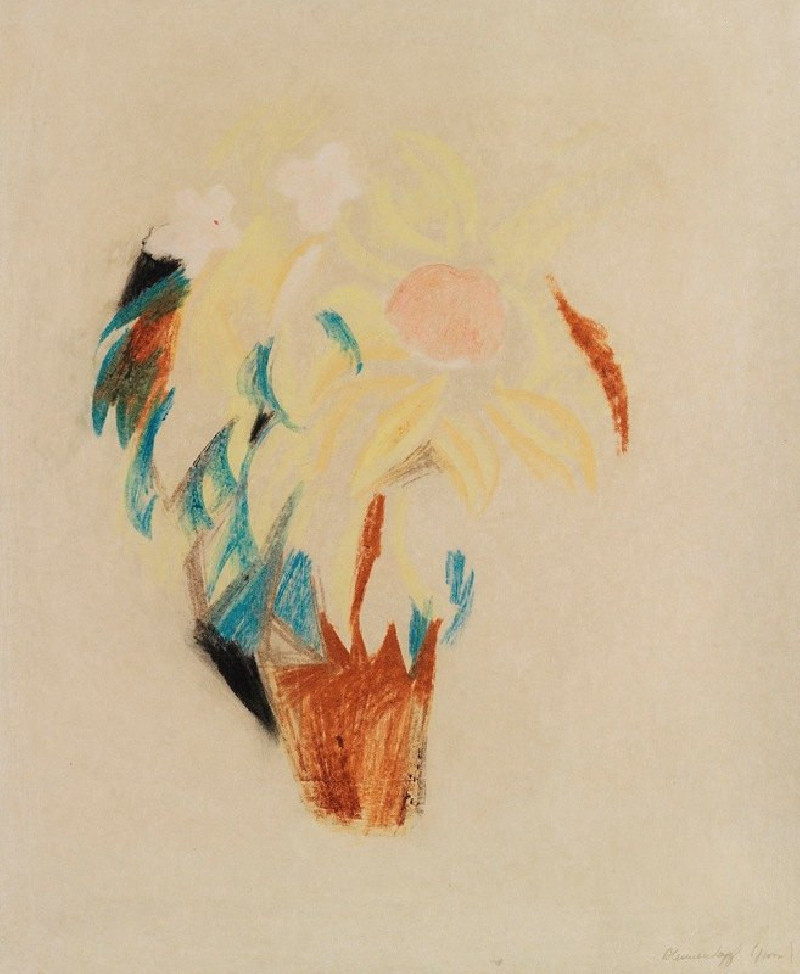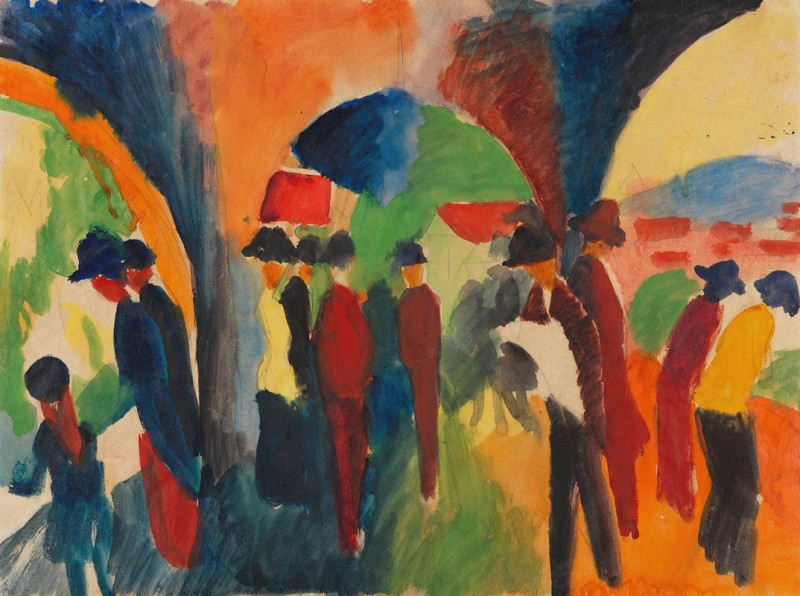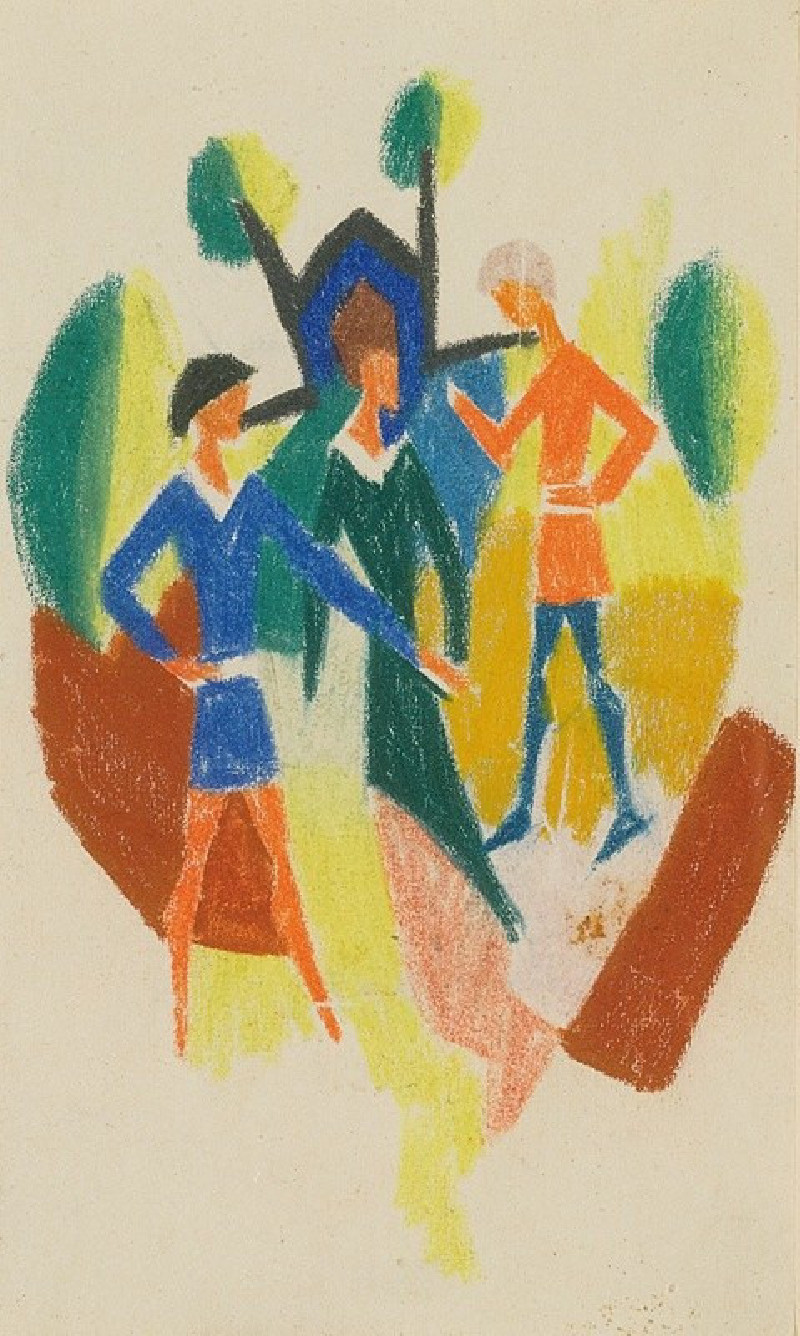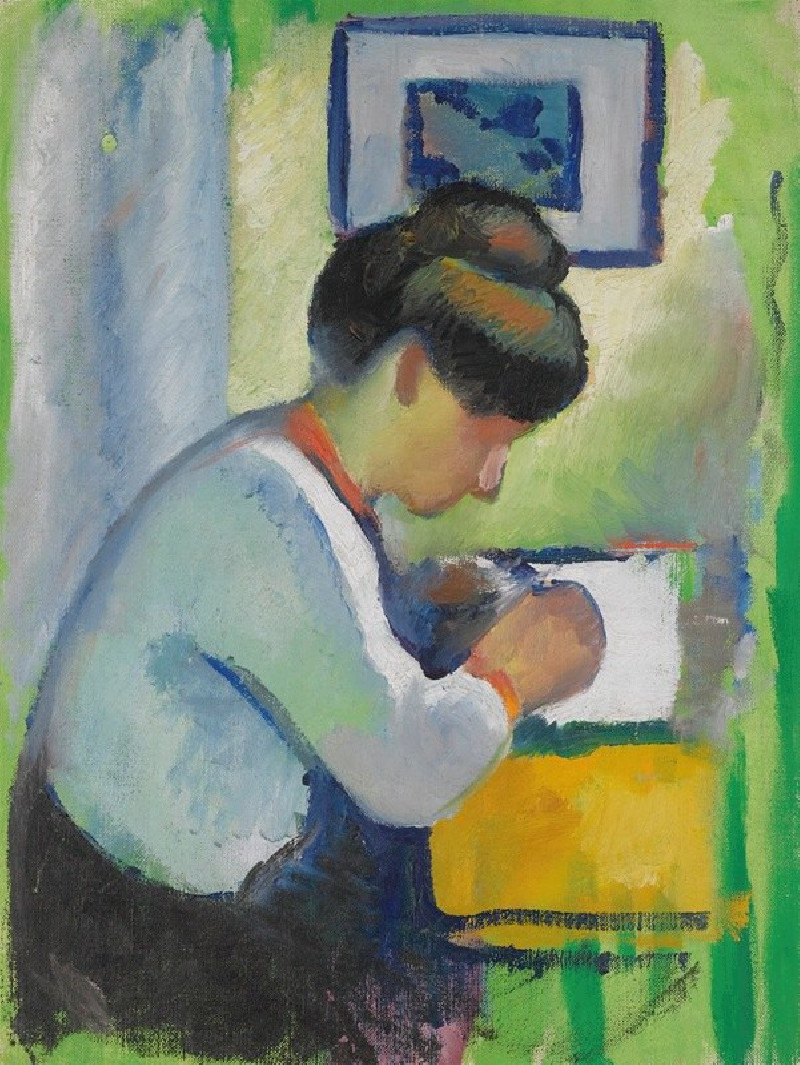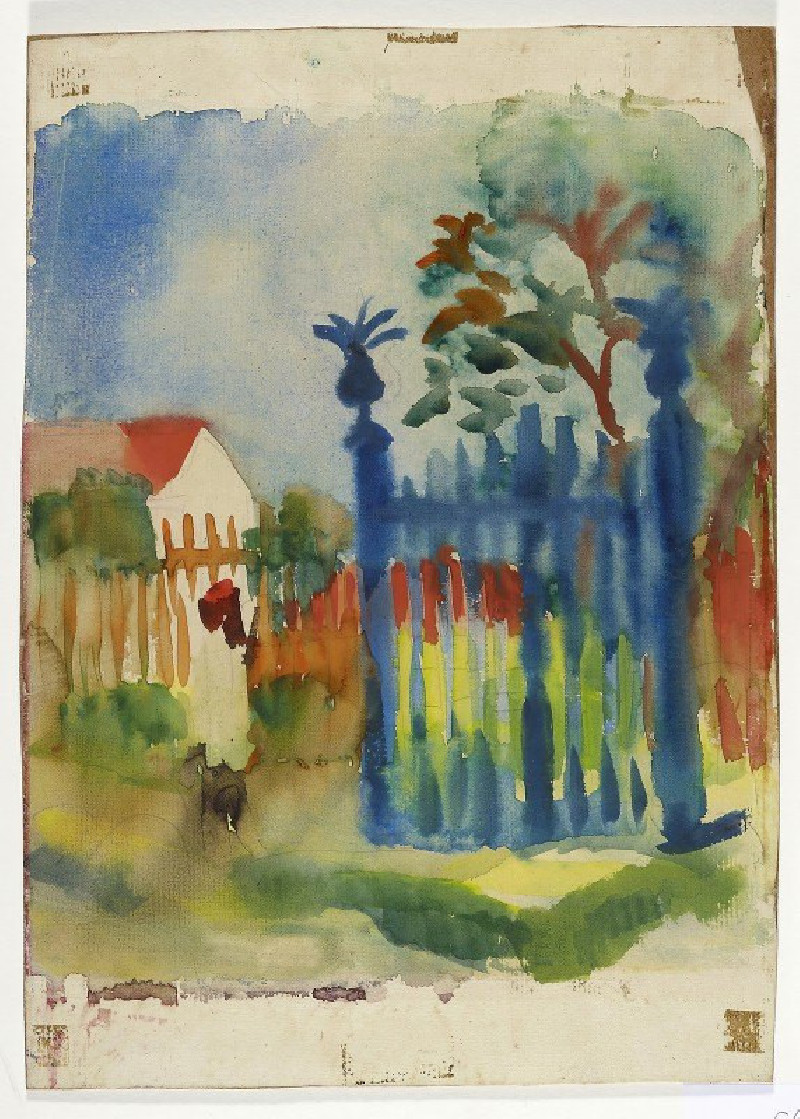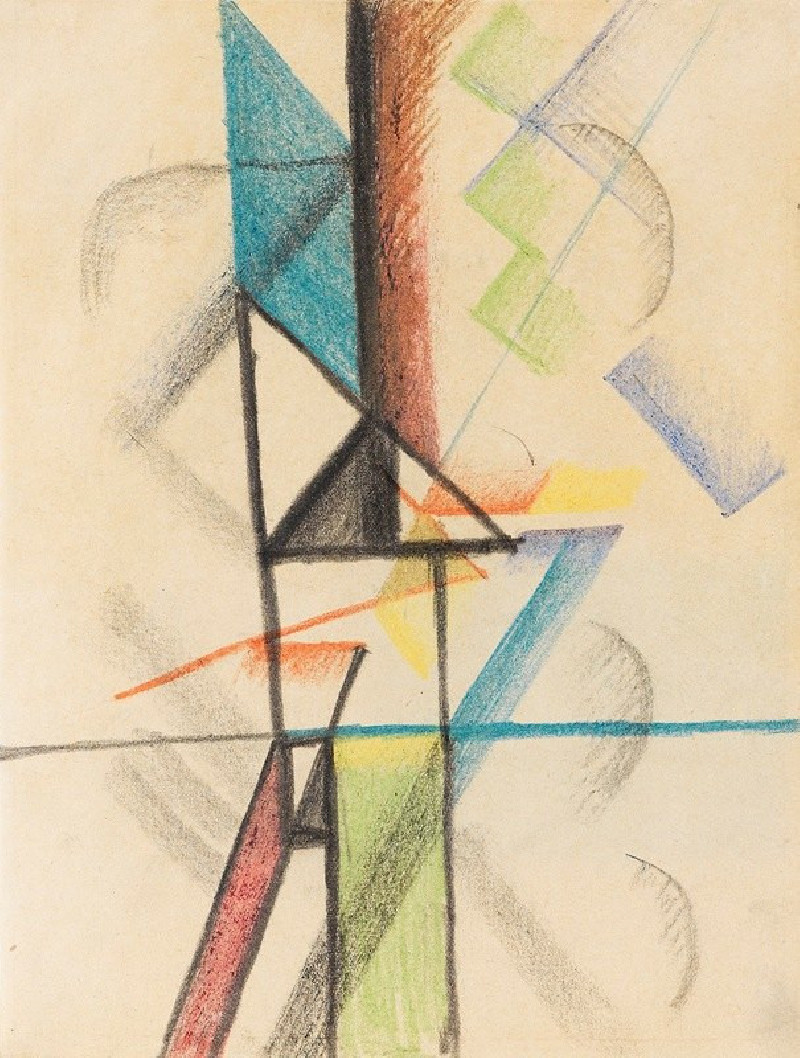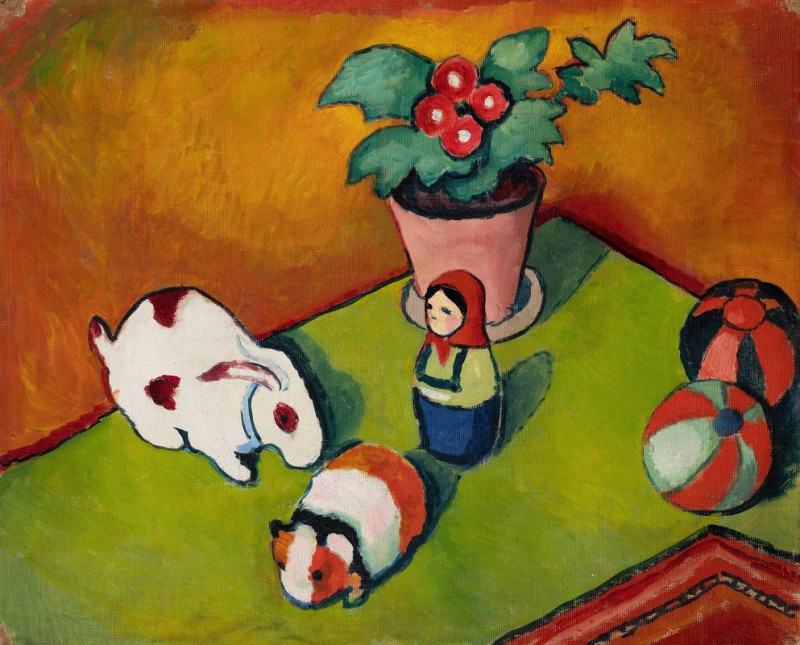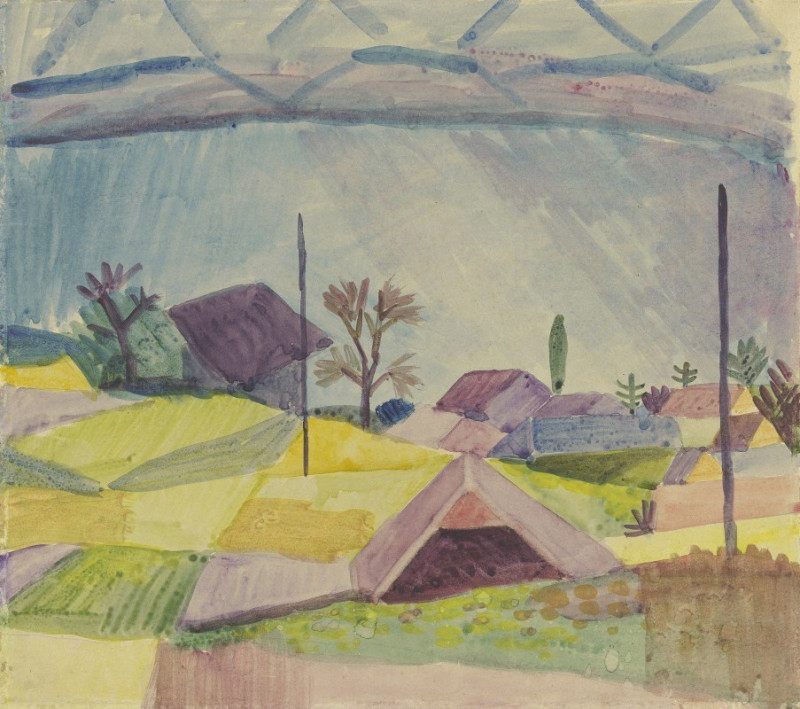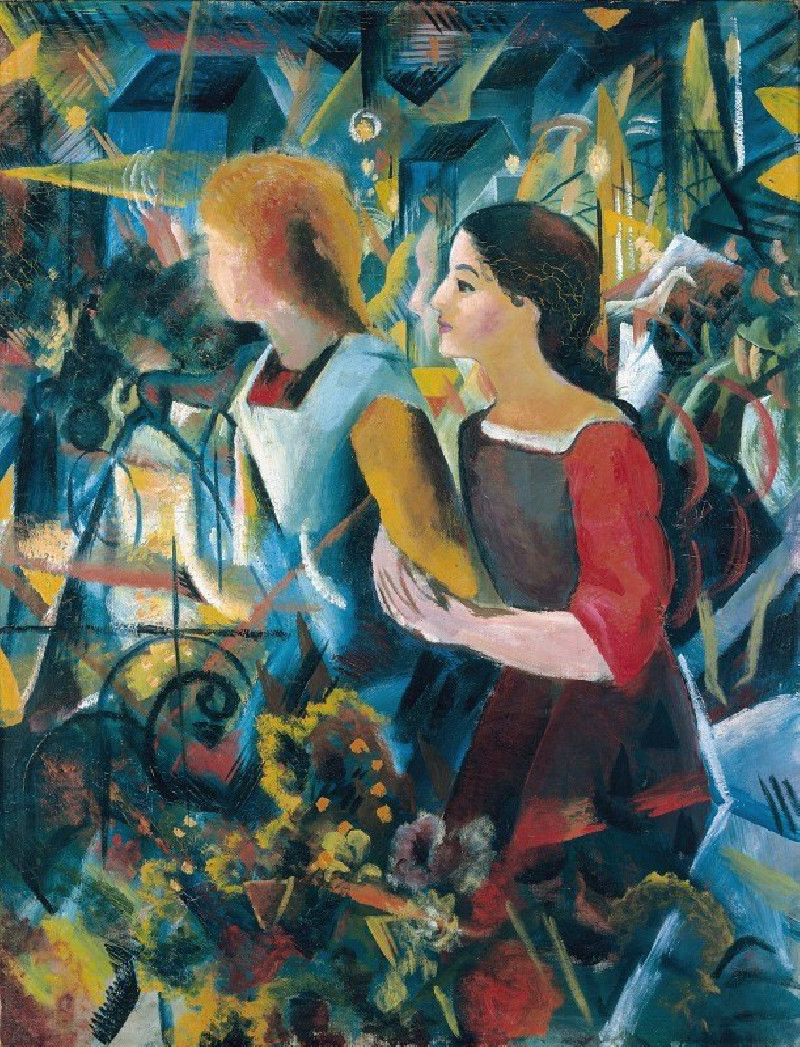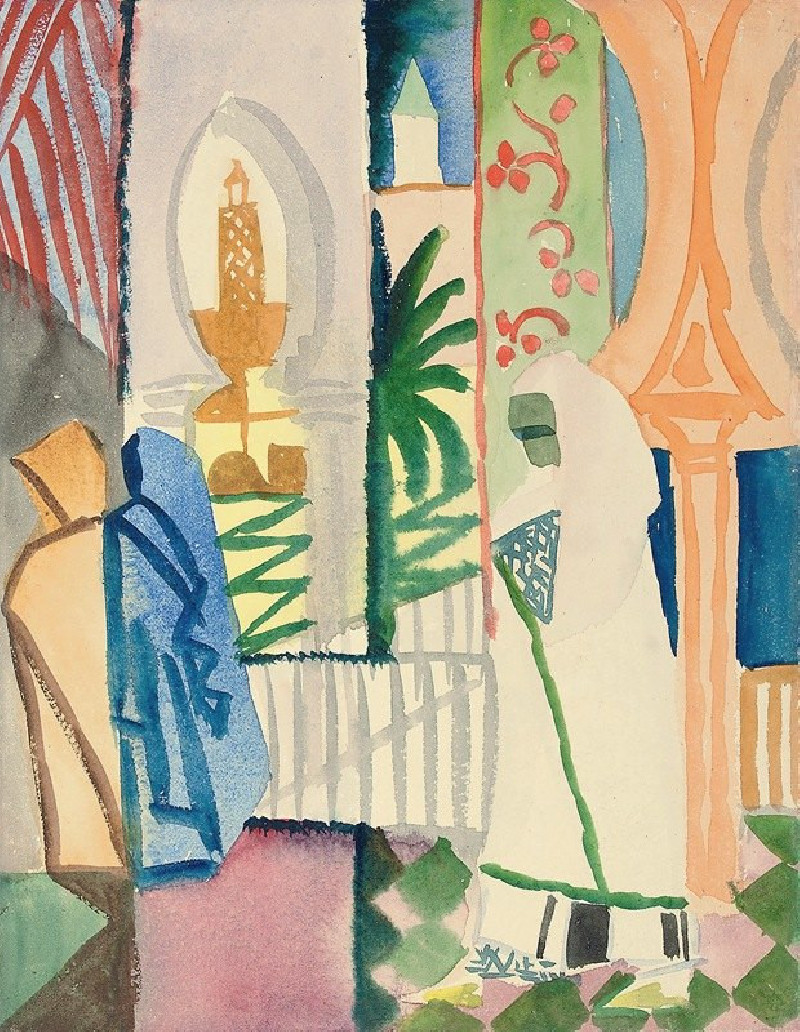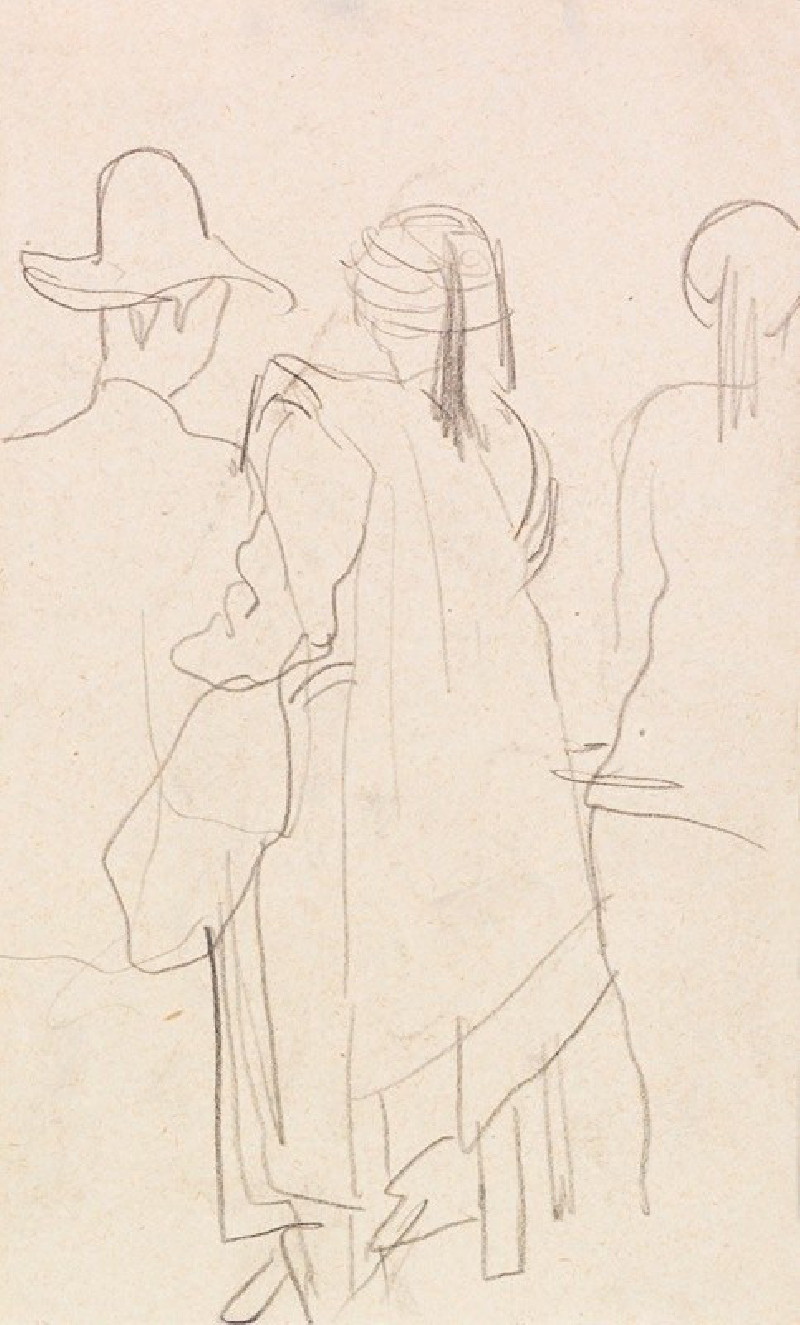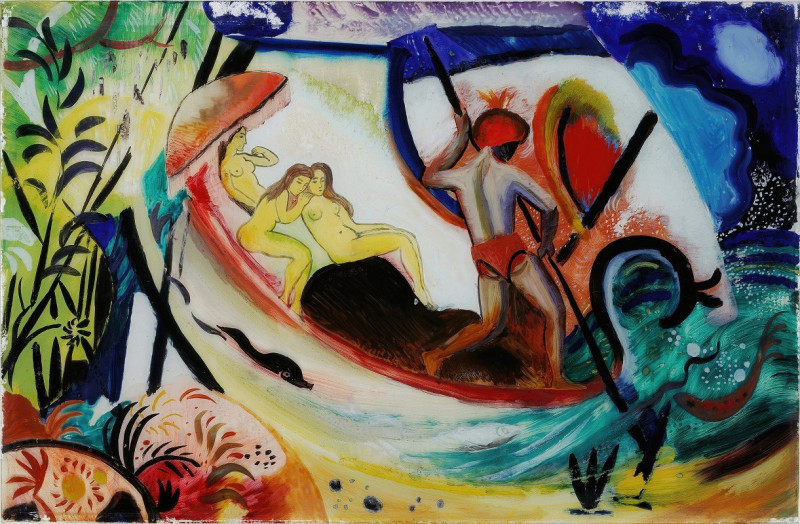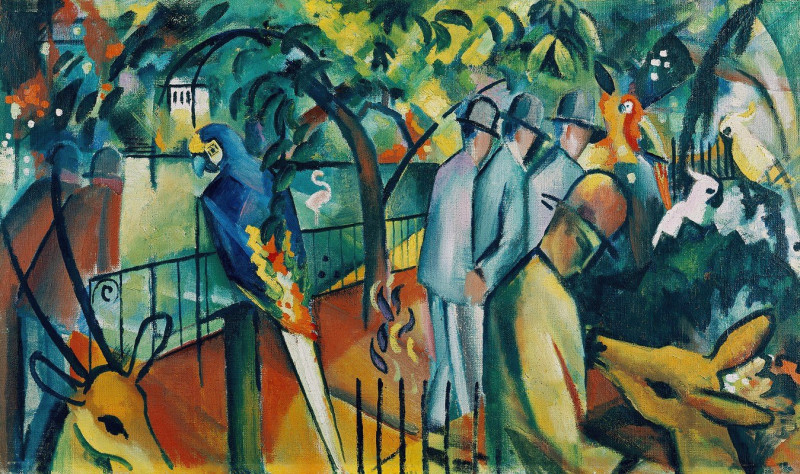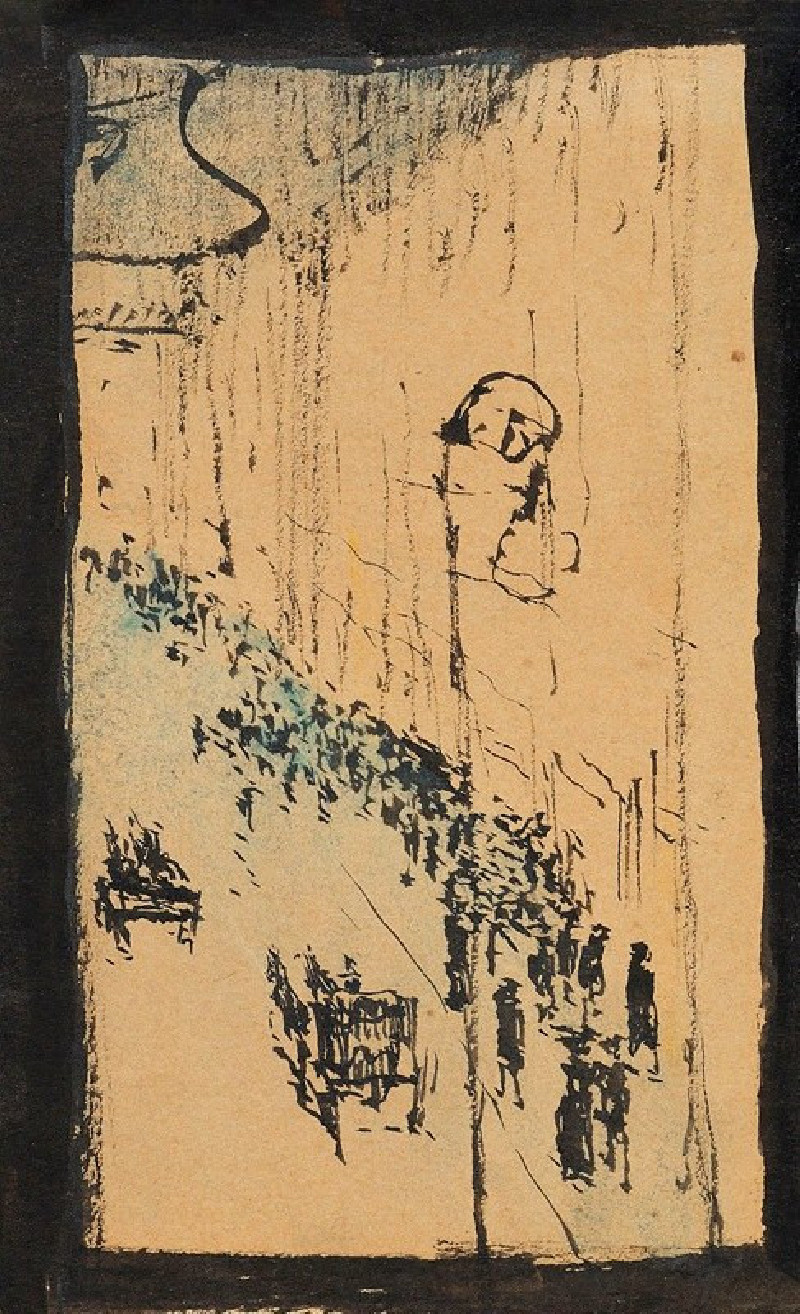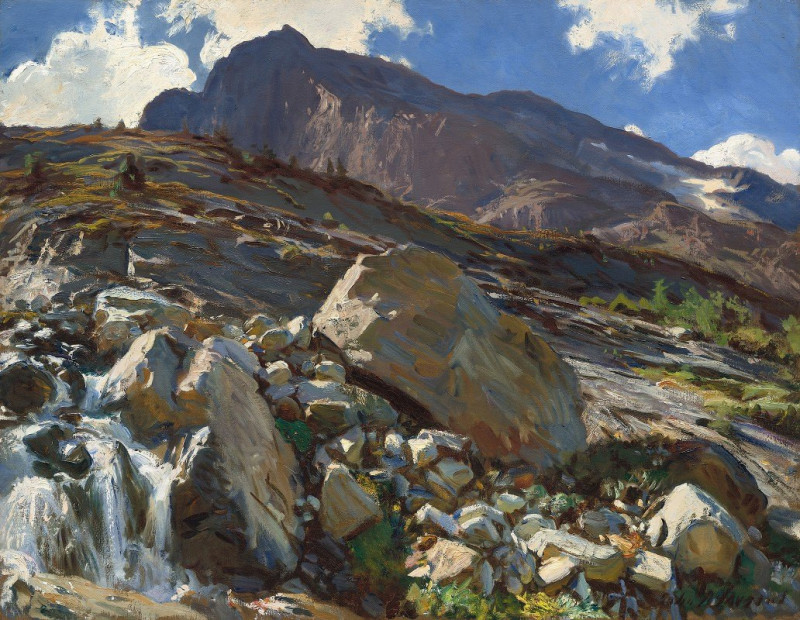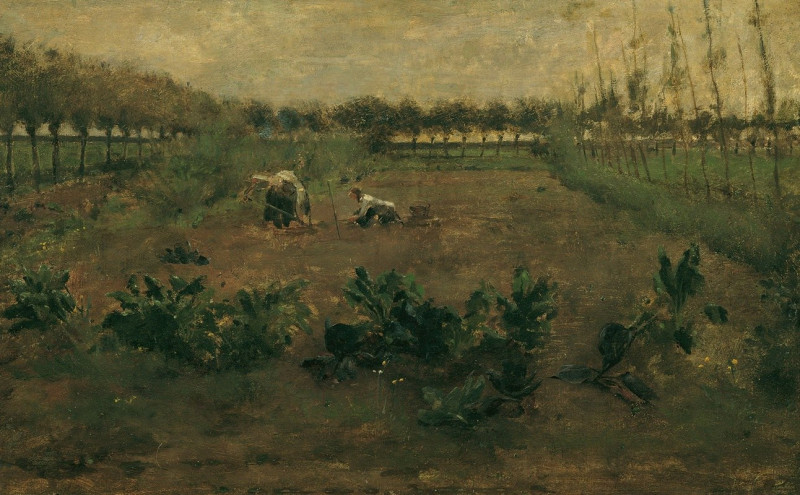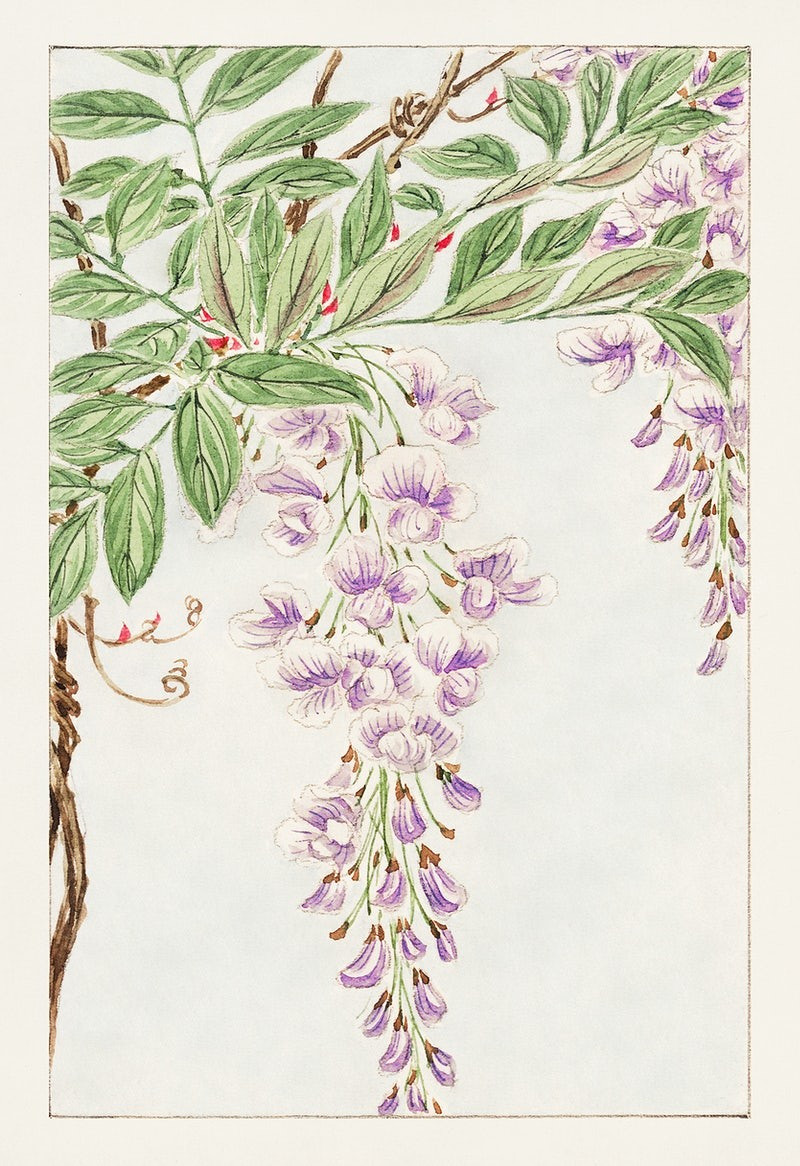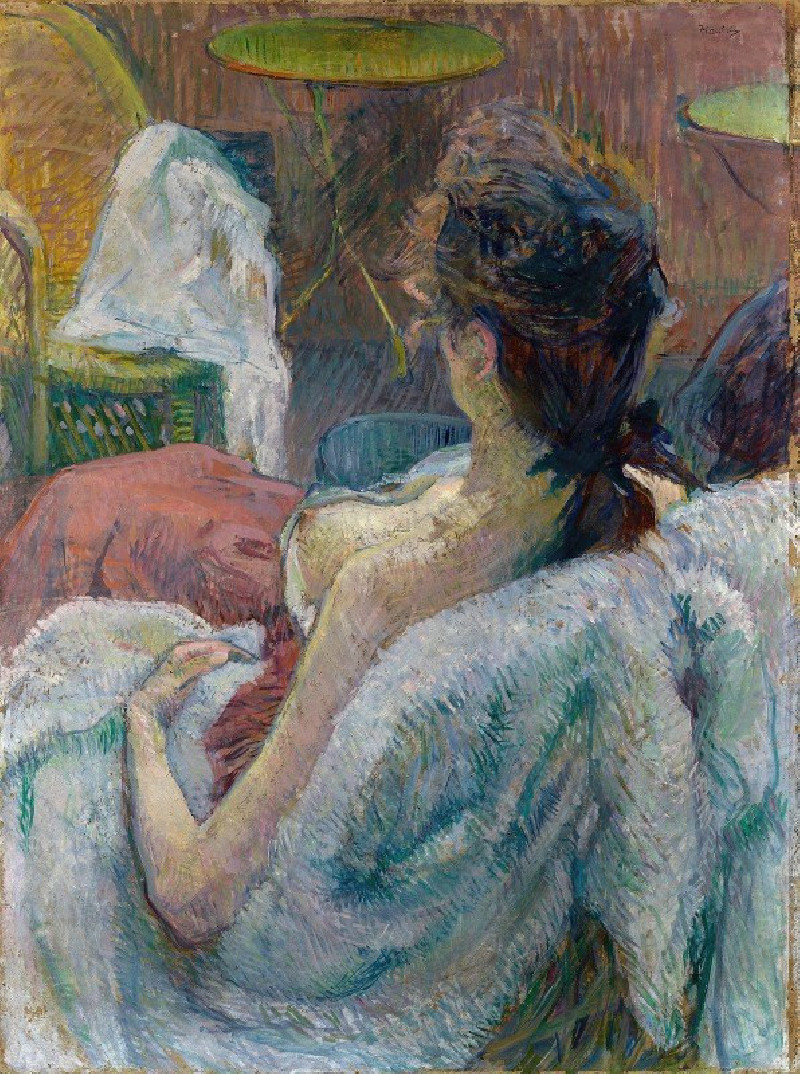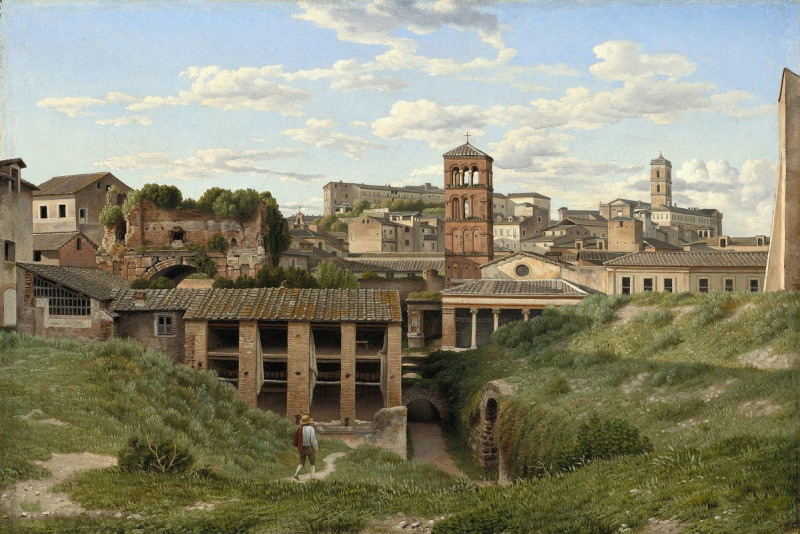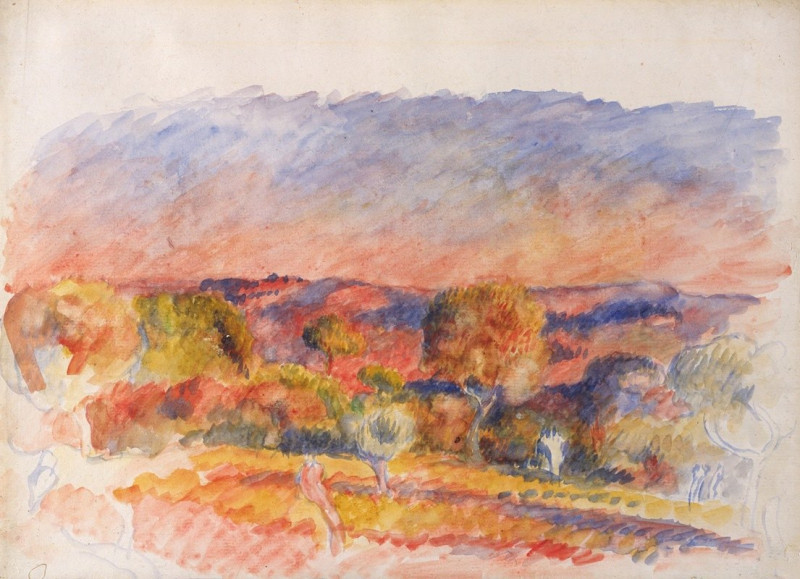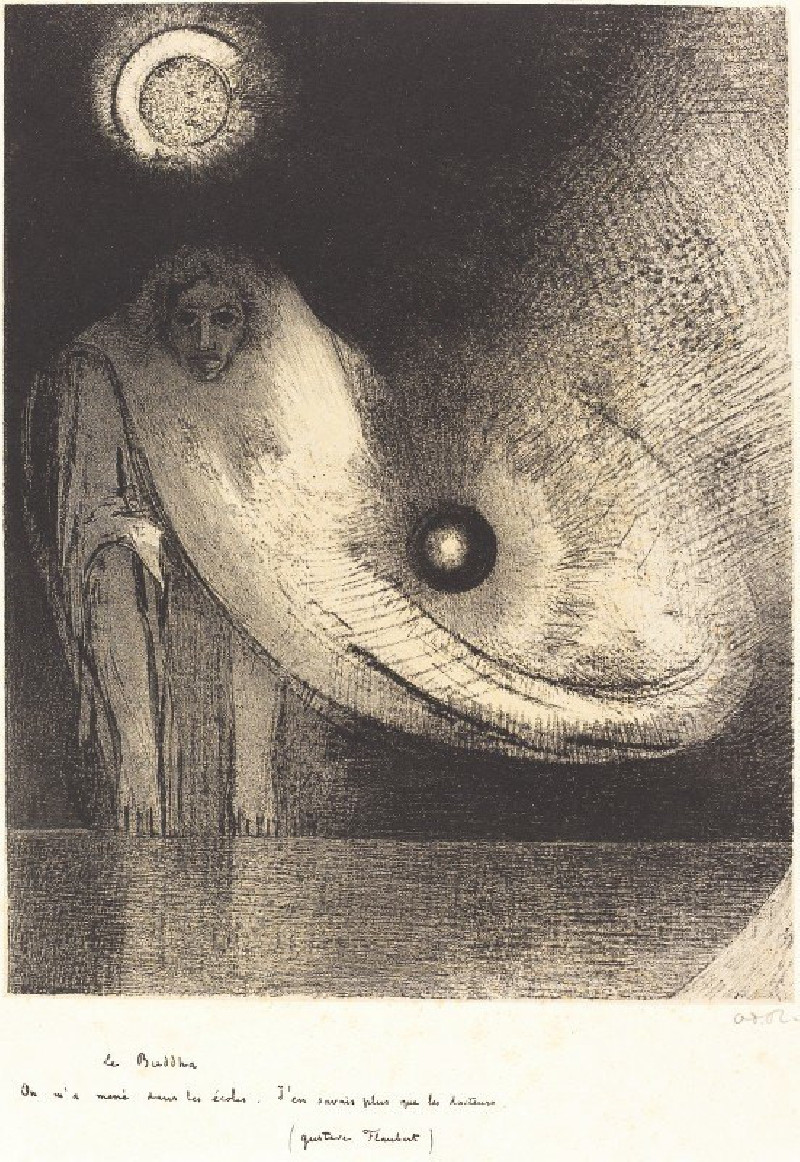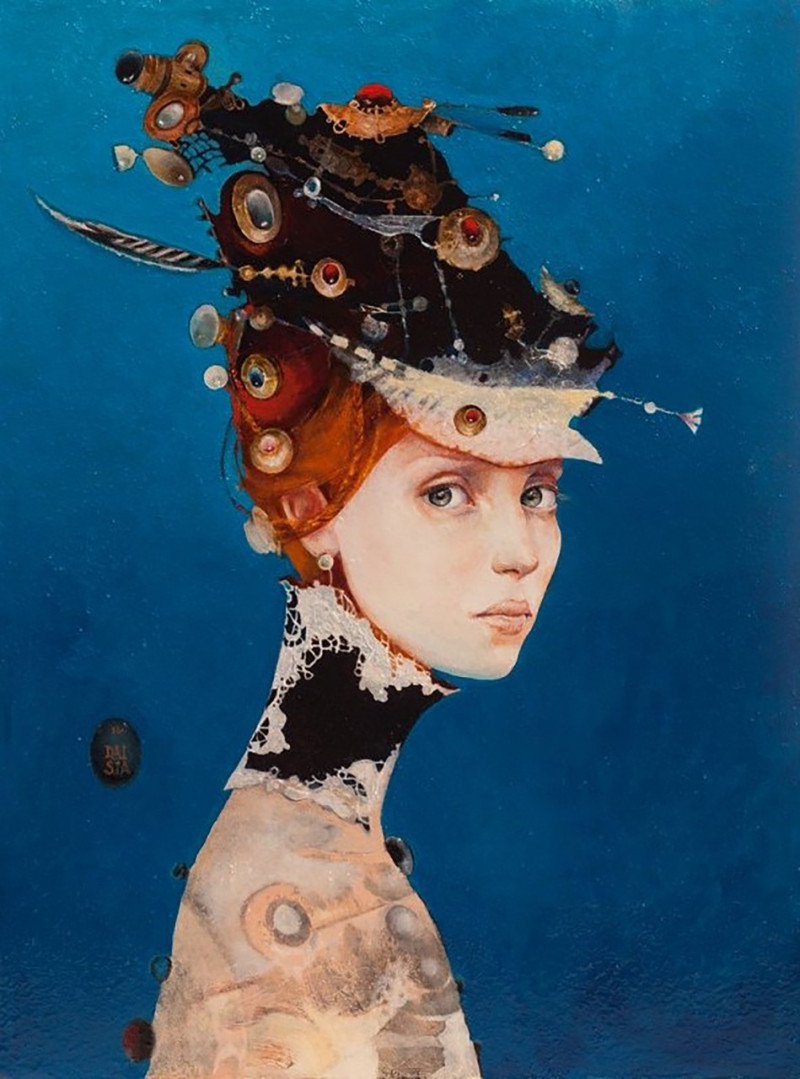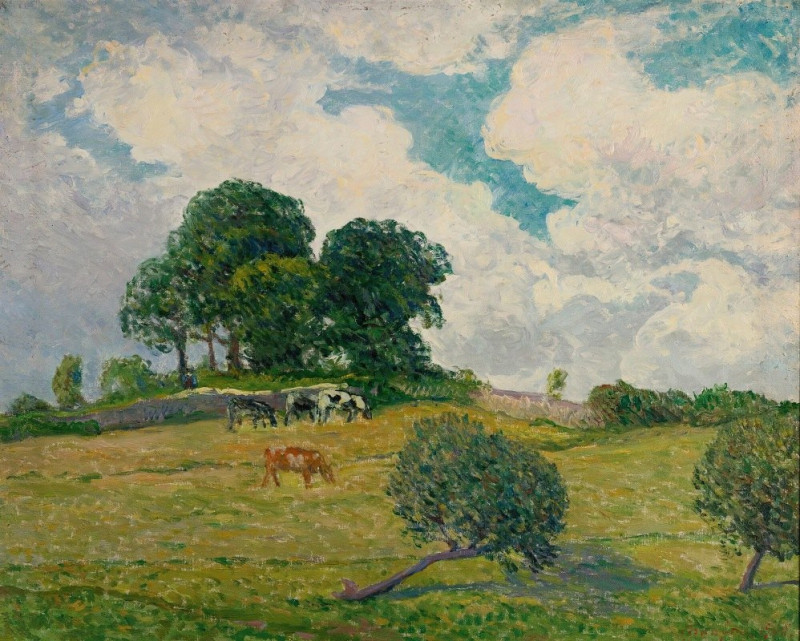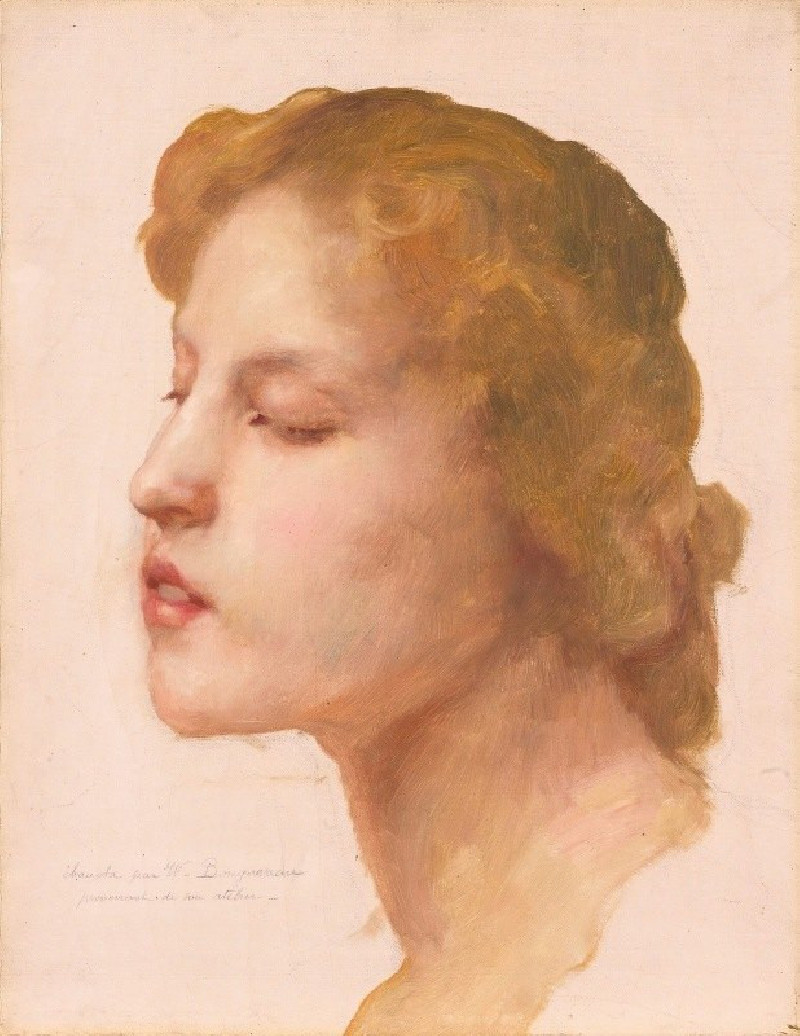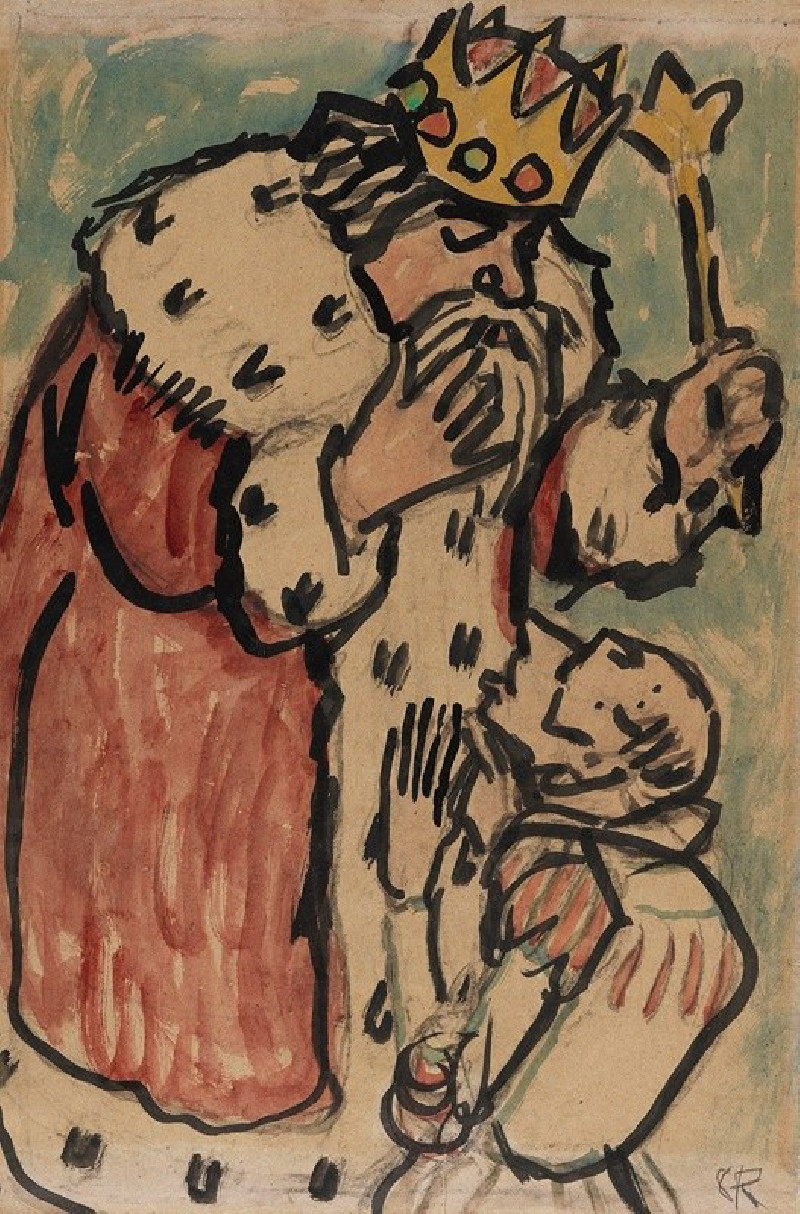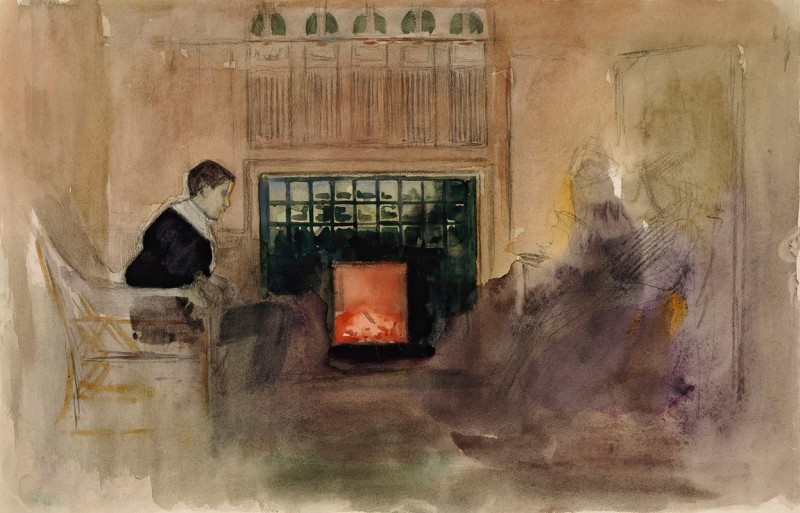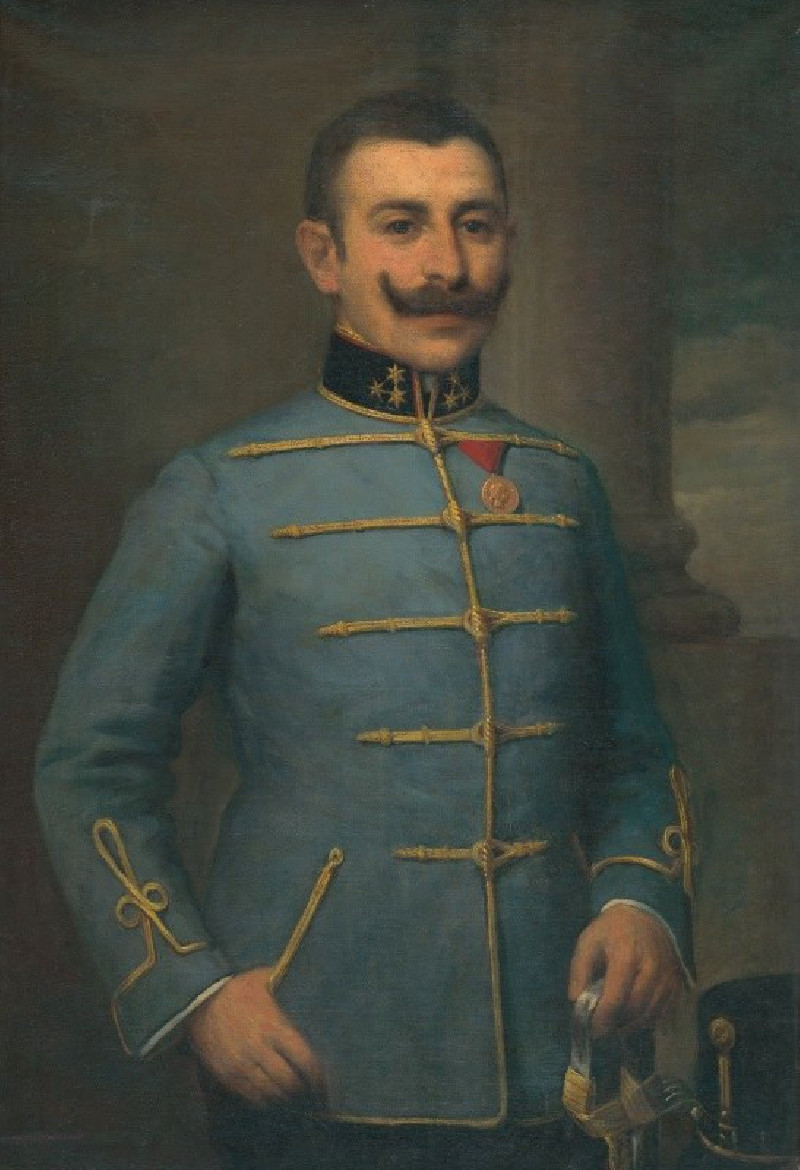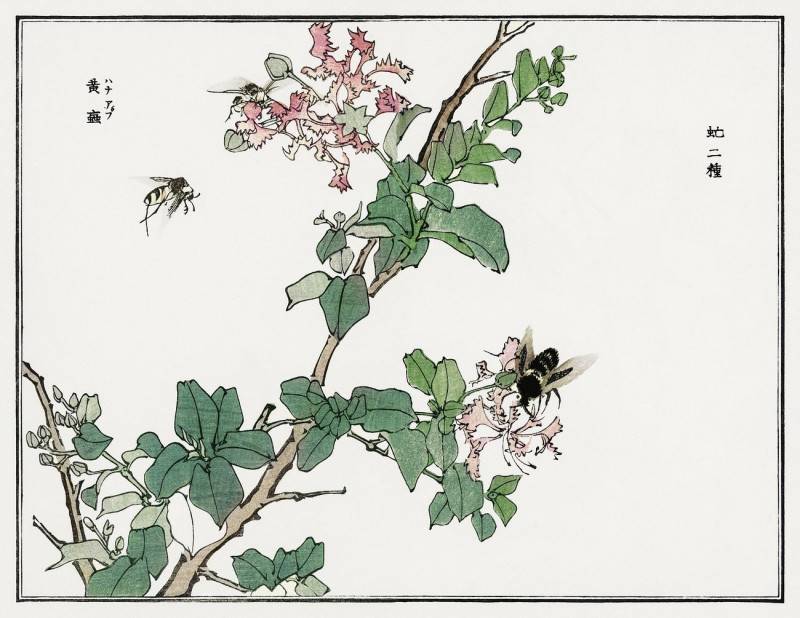Schlucht in Tegernsee (1910)
Technique: Giclée quality print
Recommended by our customers
More about this artwork
August Macke, a notable figure of the German Expressionist movement, brings to life the rugged beauty of the Alpine landscape in "Schlucht in Tegernsee" (1910). This painting captures a narrow gorge at Tegernsee, a serene lake in Bavaria, skillfully conveying the majesty and rough texture of the natural scenery.As viewers, we are immediately drawn into the depth of the gorge, framed by craggy cliffs that dominate the composition. Macke uses bold, swift brushstrokes to articulate the craggy textures and rich greenery clinging to the rocks. A unique perspective from above allows us to look down into the chasm where shadows mingle with light, enhancing the feeling of depth and vertigo.Strikingly, a small wooden bridge spans across the gorge, serving both as a focal point and a symbol of human presence amidst the overwhelming force of nature. This addition introduces a sense of scale and invites contemplation on human vulnerability and audacity in facing the natural world.Macke's palette is vibrant yet harmonious, with greens, blues, and purples mingling to create a visually cooling effect, perfect for capturing the essence of a shadowed gorge, while strokes of pink and light green in the distance suggest sunlight touching distant peaks."Schlucht in Tegernsee" is not only a testament to Macke’s skillful blend of color and composition but also an invitation to appreciate the sublime power of nature, as seen through the eyes of an expressionist master.
Delivery
Returns
August Macke (3 January 1887 – 26 September 1914) was a German Expressionist painter. He was one of the leading members of the German Expressionist group Der Blaue Reiter (The Blue Rider). He lived during a particularly innovative time for German art: he saw the development of the main German Expressionist movements as well as the arrival of the successive avant-garde movements which were forming in the rest of Europe. Like a true artist of his time, Macke knew how to integrate into his painting the elements of the avant-garde which most interested him.


